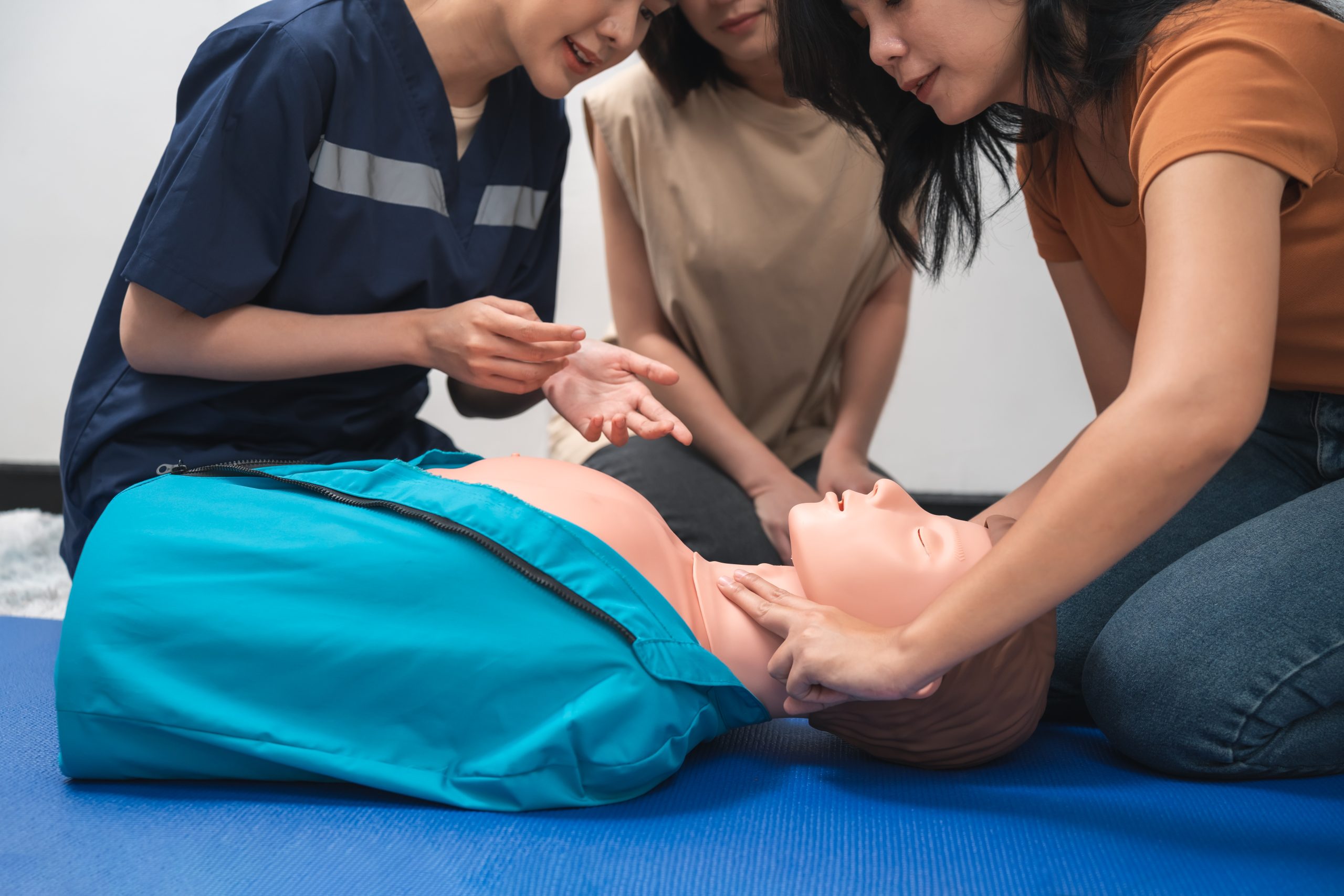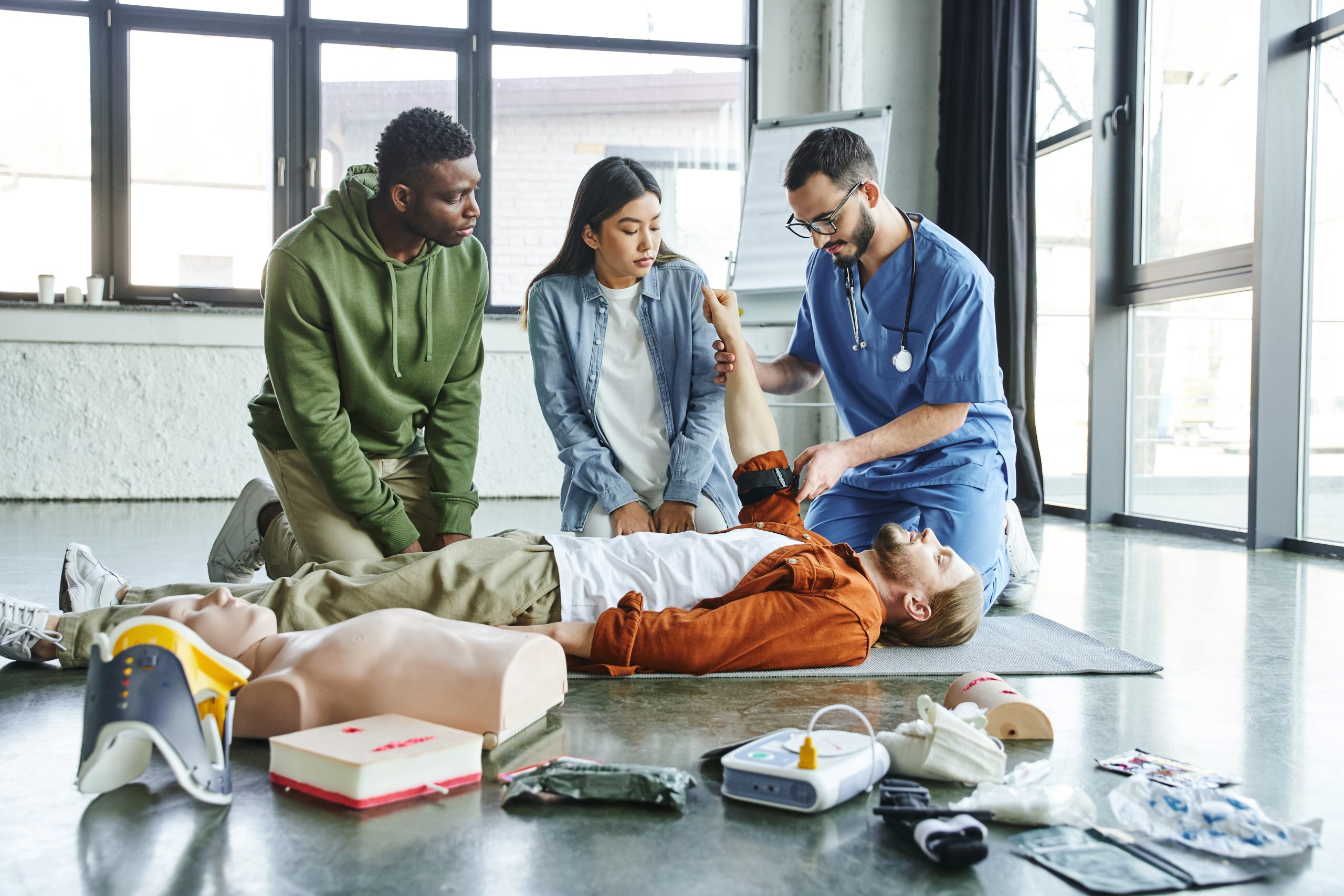
If you’ve ever sat in a school office, walked through a bustling cafeteria, or attended a high-energy school sports event, you know: schools are lively, unpredictable places. In a city as vibrant and diverse as San Antonio, TX, that energy is multiplied. But with all that activity, there’s one thing every school must prioritize—safety. That’s where CPR training comes in.
Let’s break down why every teacher, administrator, and school staff member in San Antonio should be trained in CPR—and how this training can be the difference between life and death.
Schools are high-traffic environments with hundreds, sometimes thousands, of young students. These students are energetic, active, and, at times, medically vulnerable. Emergencies can occur anywhere—from a student collapsing in the hallway to a teacher experiencing a sudden cardiac event in the classroom.
Statistics show that sudden cardiac arrest (SCA) is one of the leading causes of death in the U.S. According to the American Heart Association, over 350,000 cardiac arrests occur outside a hospital setting every year, and about 7,000 of those happen to children. Now imagine that happening in a school without a single CPR-trained adult nearby.

Cardiopulmonary Resuscitation (CPR) is a basic yet powerful life-saving technique. It keeps oxygenated blood flowing to the brain and other vital organs until advanced medical care can take over. When done properly, CPR can double or triple a victim’s chance of survival.
In a school setting, waiting for an ambulance may take 8-12 minutes. But brain damage can begin after just 4 minutes without oxygen. That gap is where a CPR-trained staff member becomes a hero in action.
Looking to learn CPR fast? Enroll in a CPR class in San Antonio that fits your schedule and get certified today.
In most schools, the nurse may not be present at all times, or there may be just one medical professional for hundreds of students. That makes teachers, janitors, front desk staff, and even coaches the de facto first responders.
Here are a few real-world scenarios:
A student with asthma forgets their inhaler and collapses during PE.
A cafeteria worker begins to choke on food.
A teacher suffers a heart attack in the middle of class.
In each of these cases, seconds count—and a CPR-trained colleague could be the difference between life and death.
If you’re unsure where to begin, check out this helpful guide on what to expect in a CPR certification class.
San Antonio isn’t just any city. It’s a sprawling metro with over 1.5 million residents and more than 17 independent school districts. With such a vast and varied school population, preparation needs to be both universal and localized.
Factors that make CPR training especially relevant in San Antonio include:
Hot Climate: Heat-related emergencies are more common during field days or outdoor sports.
Large Student Populations: More students = higher chance of emergencies.
Diverse Health Needs: Students may have undiagnosed or uncommunicated medical conditions.
Plus, in a city committed to family and community, training school personnel in CPR is just another way to invest in public well-being.
Find the most reputable CPR certification programs near you and schedule group training for your entire school staff.

Under the Texas Education Code, students are required to receive CPR training at some point in their high school career. But what about the adults?
While not always mandated, many Texas districts now encourage or require CPR certification for school staff, especially coaches and bus drivers. There’s a growing push to make this a statewide standard—and for good reason.
By proactively training staff, schools stay ahead of liability issues, reduce emergency response time, and build a culture of care and preparedness.
Want to know which certification is best for educators? Here’s a comparison of CPR certifications by the American Red Cross and AHA.
For official policy details, check out the Texas Education Code §28.0023.
Getting trained in CPR is easier than ever. In San Antonio, CPR classes are available through:
Private CPR training companies that offer onsite school training
Online hybrid courses with in-person skills assessments
Most courses take just a few hours and include instruction in:
Adult, child, and infant CPR
AED (Automated External Defibrillator) use
Choking rescue techniques
First aid basics (optional in many programs)
Not sure how long your CPR certification lasts? Here’s a quick read on how often you need to renew CPR certification.
Many of these providers offer group discounts for schools or can even come onsite for staff in-service days.
When teachers and staff are CPR-trained, they gain more than a certification. They gain confidence, leadership skills, and the ability to act decisively in moments of crisis.
Even more powerful? The ripple effect. Students witnessing these skills in action are more likely to:
Stay calm in emergencies
Learn CPR themselves
Respect the importance of public health
This transforms a single CPR certification into a community-wide commitment to safety.
To empower your staff, consider enrolling them in a group CPR training program tailored for schools and organizations.
If you’re a school administrator, teacher, or parent in San Antonio, here are some steps you can take:
Advocate for Training: Bring up CPR training at staff meetings or PTA sessions.
Partner with Local Providers: Set up recurring training through AHA or Red Cross-certified organizations.
Incorporate AED Drills: Know where your school’s AEDs are—and make sure staff do too.
Make It Fun: Host a “CPR Day” during professional development to build skills and camaraderie.
San Antonio’s teachers and school staff are already heroes in the eyes of their students. CPR training simply adds another layer to that heroism. With minimal time and cost, school communities can arm their teams with the skills they need to save lives.
Because in an emergency, it’s not about what you wish you could do—it’s about what you’re trained to do.
Start today by finding CPR classes near you and building a safer, more prepared San Antonio school community.
Our primary goal is to ensure that you receive a top-quality CPR/First Aid certification. With our in-person training in Austin, you can learn CPR and BLS in just one class. Your presence is all that’s needed to continue with your lesson! During your session, you will complete all the live-training components necessary to ensure you receive your AHA Healthcare Provider certification card.
Our CPR Classes in Austin are discounted to $59.95 (saving you $20), and our CPR + First Aid Class is offered at $79.95 (also saving you $20). When looking for CPR Classes, ensure to check for the American Heart Association seal. Other sites might seem cheaper but frequently lack the official training credentials demanded by employers.
Upon successful completion of the course, you will obtain a CPR certification that is valid for two years. The AHA CPR certification is recognized with the highest acceptance rate among employers nationwide.
Indeed! Enroll in any CPR Certification Austin BLS course to extend your certification for an additional two years. The in-person BLS course and the Renewal Class are identical.
Anyone capable of completing the course independently should consider pursuing CPR training and CPR Certification. There is no minimum age restriction for obtaining a CPR certification in Austin through the American Heart Association (AHA)..
CPR training needs to be carried out in person to guarantee its effectiveness. Our experienced instructors offer an engaging and dynamic learning experience. Typically, employers do not recognize CPR certifications that are obtained solely through online courses.
All authorized American Heart Association training centers are obligated to display the entire video. After a three-hour session with CPR Classes Near Me Austin, your BLS CPR eCard will be promptly issued by the instructor on the same day!